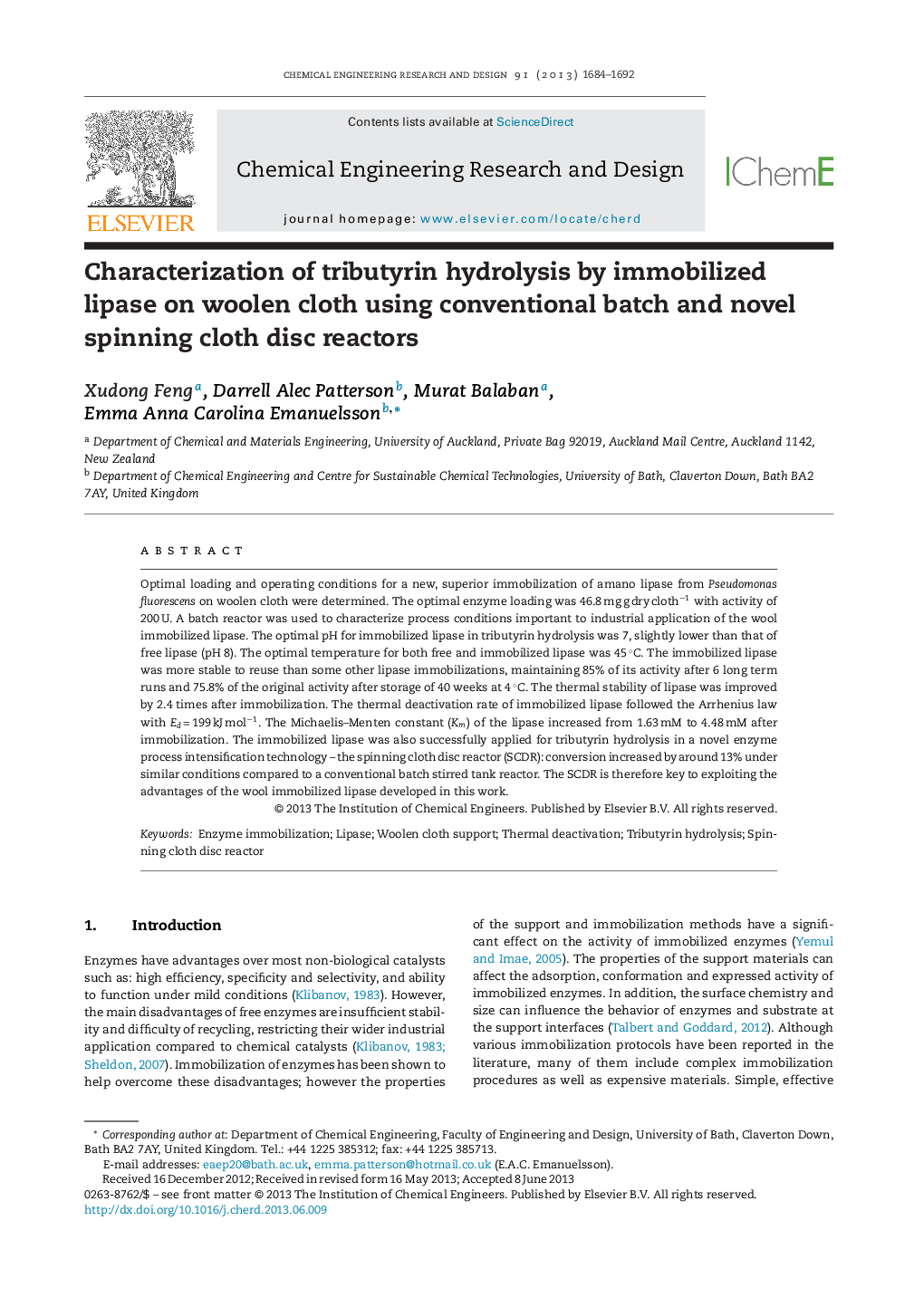| Article ID | Journal | Published Year | Pages | File Type |
|---|---|---|---|---|
| 621178 | Chemical Engineering Research and Design | 2013 | 9 Pages |
Abstract
Optimal loading and operating conditions for a new, superior immobilization of amano lipase from Pseudomonas fluorescens on woolen cloth were determined. The optimal enzyme loading was 46.8 mg g dry clothâ1 with activity of 200 U. A batch reactor was used to characterize process conditions important to industrial application of the wool immobilized lipase. The optimal pH for immobilized lipase in tributyrin hydrolysis was 7, slightly lower than that of free lipase (pH 8). The optimal temperature for both free and immobilized lipase was 45 °C. The immobilized lipase was more stable to reuse than some other lipase immobilizations, maintaining 85% of its activity after 6 long term runs and 75.8% of the original activity after storage of 40 weeks at 4 °C. The thermal stability of lipase was improved by 2.4 times after immobilization. The thermal deactivation rate of immobilized lipase followed the Arrhenius law with Ed = 199 kJ molâ1. The Michaelis-Menten constant (Km) of the lipase increased from 1.63 mM to 4.48 mM after immobilization. The immobilized lipase was also successfully applied for tributyrin hydrolysis in a novel enzyme process intensification technology - the spinning cloth disc reactor (SCDR): conversion increased by around 13% under similar conditions compared to a conventional batch stirred tank reactor. The SCDR is therefore key to exploiting the advantages of the wool immobilized lipase developed in this work.
Related Topics
Physical Sciences and Engineering
Chemical Engineering
Filtration and Separation
Authors
Xudong Feng, Darrell Alec Patterson, Murat Balaban, Emma Anna Carolina Emanuelsson,
